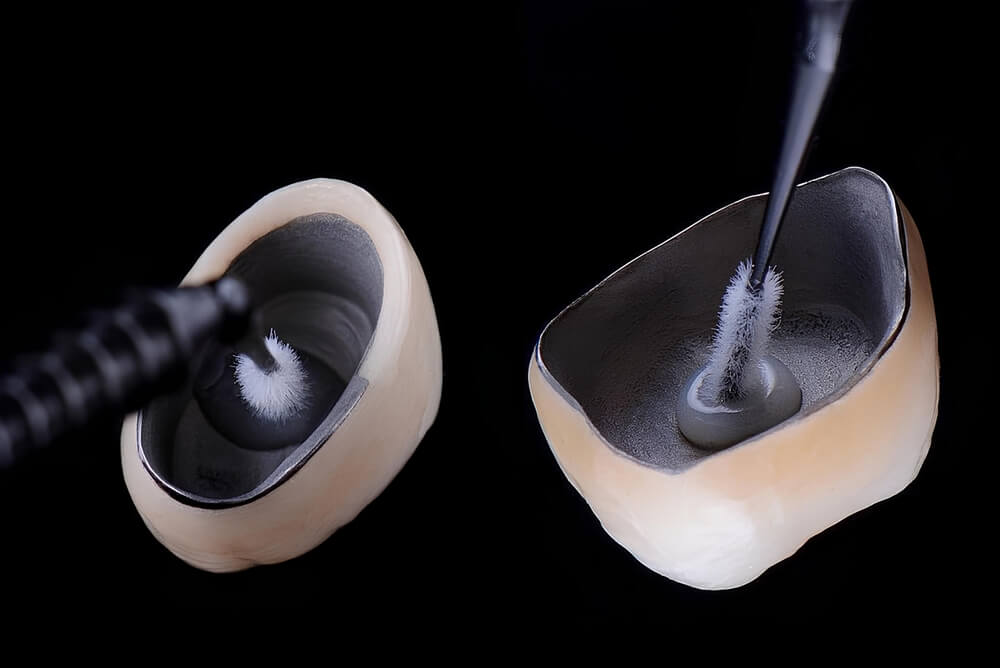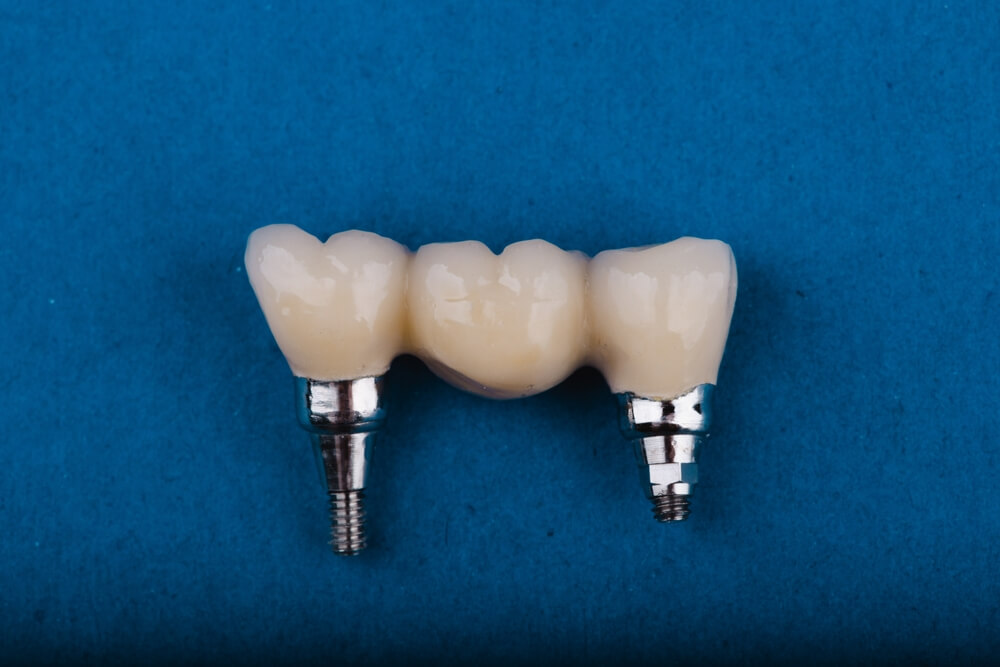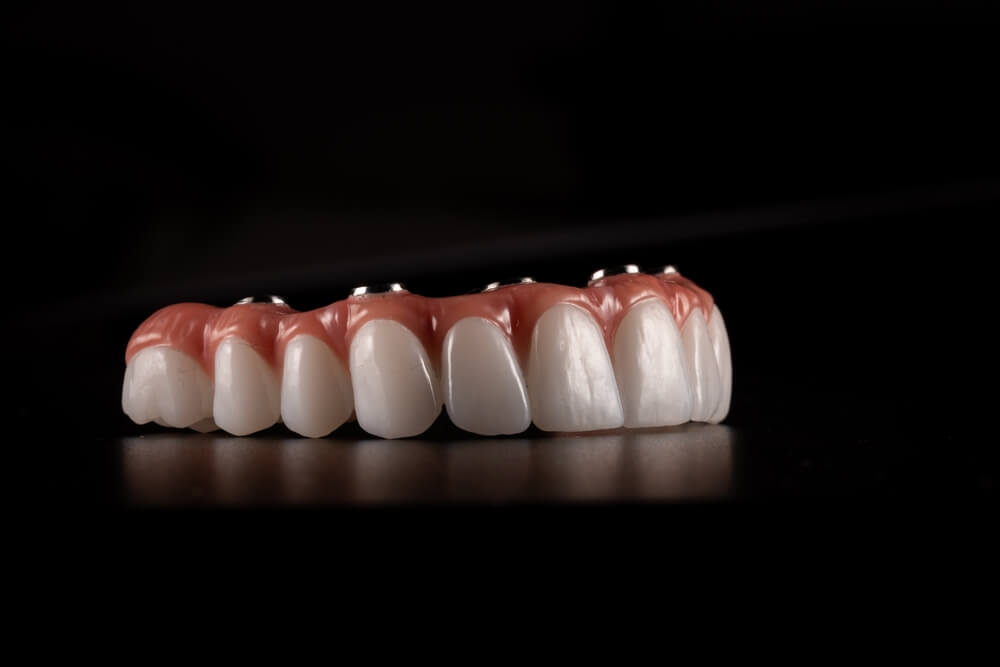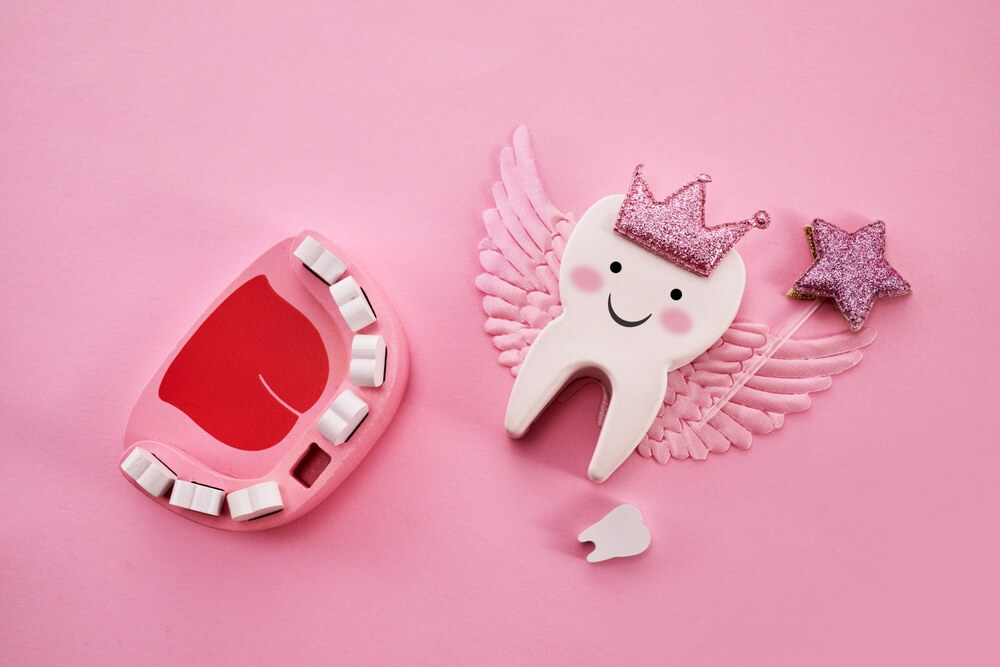A crown is a dental restoration that can be made out of multiple substances gold. There can be porcelain, there are newer materials that are different types of ceramics, and a crown. It’s a full coverage restoration, so it’s almost like a hat that covers it too and’s mainly there to restore a large area that’s missing from a tooth or to protect a tooth after say Canoe or after a large piece broken.
Caring for a crown is similar to caring for a tooth and you have to brush it and feels just like you do your natural teeth. You can get cavities around crowns where the crown and the two structures meet, so taking care of it is about the same.
You also want to learn about Black or brown specks on the tooth because it’s the first cause of loss tooth.
Difference Between Monolithic and Layered Crowns
Do you know the difference between a monolithic and a layered crown? So monolithic is made of only one material, while a layered crown consists of multiple layers, for example, a porcelain fused to metal or porcelain zirconia. Where you have a metal or zirconia coping and a porcelain layer on top. Remember that it’s extremely important because it makes a huge difference in crown selection for starters.
A layered crown requires more preparation compared to a monolithic crown, which may not always have the liberty to do so. On this note, we will discuss the first monolithic crown material, that is the metal crowns.
Metal Crowns
The best thing about a metal crown is that it doesn’t require too much tooth preparation and it conserves the tooth structure. It is strong and durable, and because of this property it doesn’t have to be very bulky, so even in thinner cross sectionctions, they have adequate strength. It also does not upgrade the opposing natural teeth as much when you compare it to ceramics. But the biggest disadvantage and the reason that most people don’t opt for metal crowns these days is their aesthetic appearance.

Another disadvantage, or rather a contraindication for a metal crown is if a patient gives a history of metal allergy. This allergic reaction happens if you give a nickel-chromium alloy crown. People can be allergic to nickel and it causes contact dermatitis in patients allergic to metal. It is safer to go with metal-free grounds.
Porcelain Fused to Metal (PFM) Crowns
The second common material that we use is a porcelain fu to metal or a PFM crown. These have been used successfully for the last few decades. What made it popular in the past was its acceptable durability and aesthetics. Currently, although we have better aesthetic grounds, it is still the most economical option among those.
The major drawback of PFM is that it is extremely invasive when it comes to tooth reduction as you need to make space for both the metal coping and the ceramic layer on top, these are the least conservative of all materials out there.
Secondly, if the preparation is inadequate or heavy masticatory forces are applied on one part of the crown, the chances of porcelain shipping are very high. we are sure you all must have seen fractured or chipped-off porcelain crowns in your dental practice, so these are some things that you need to remember. Apart from these, we have porcelain fused to zirconia or PFZ, so they are similar to PFM. Except here you have zirconia coping. These crowns give you a better fit and aesthetics. Compared to conventional PFM, the disadvantages of PFM and PFZ are more or less the same, which includes excessive tooth reduction. However, less than PFM crowns and shipping of the porcelain.
Zirconia Crowns
Next, we have the Zakconia crowns prevalent these days. They are known for their excellent strength and durability. Monolithic zirconia is considered to be the strongest of the prosthetic crowns. Again, these crowns don’t require too much preparation because as mentioned earlier, these are monolithic, so only one material, conserves a tooth structure and they don’t have to be as bulky as PFM or PFZ.
The disadvantage of these grounds is that they tend to upbraid the opposing natural dentition, especially if left unpolished. Also, zirconia inherently is opaque and it is stained on the outside. So the aesthetic properties of monolithic zirconia grounds are not that great. These days you do have better translucent zirconia which is more aesthetic. So talk to your lab technician about the different materials that they are using.
Lithium Disilicate (Emax) Crowns
The last option is the lithium disilicate crown, popularly known as the Emma crown. These crowns give a natural, lifelike appearance and nothing meets a lithium-dicilicated crown. When it comes to aesthetics, these crowns are bonded to the underlying tooth structure. Unlike other crowns which have to be looted with cement, they are known to have considerably less strength, but its ability to burn to enamel increases the strength exponentially.
Hybrid Ceramics and New Materials
We would also like to add that there are a lot of new materials that are developed and are being developed in search of an ideal restorative material. You have the hybrid ceramics which are a combination of ceramic and composites which seem pretty promising in terms of strength, aesthetic, and minimally invasive preparations.
Then you have the indirect reinforced composite blocks as well with improved mechanical properties. A popular opinion among many is that composites are the future and restorative dentistry.
We have very briefly discussed the main advantages and disadvantages of the commonly used materials. Now we shall discuss some clinical applications of these prosthetic materials and explain what ground to choose and what not depending on the case.

Crowns for Bruxism and Short Clinical Crown Height
First, we shall discuss the most common parafunctional habit that mainly includes clenching and grinding of teeth which we all know asxism in a Broxso. The most common failure when it comes to crowns and bridges is a fracture of material due to heavy masticatory forces. Especially when you are giving a layered prosthesis.
This can be your PFM PFZ layered zirconia or a lay lithium disilicate crown. Another failure reported in Broxos is a failure of retention of crowns or crowns being frequently dislodged what is the reason behind this?
Naturally, in Bruxels you will find worn-out teeth or teeth with already short clinical crown height. So when you prepare a tooth for a crown, what will happen? The length of the crown decreases further, and to make things worse, if you end up given a layered prosthesis, you will be left with barely any food structure, and your retention and resistance form are compromised, leading to crown dislodgment.
Monolithic Crowns for Bruxism
You need to give an accurate fitting crown which requires minimal tooth reduction. Superbly give a monolithic crown in these patients, so monolithic can dislocate metal Sidonia and lithium dislocate now. Among these, the best option according to me and my experience is a metal crown. Metal crowns are known to be worn-friendly also, so they won’t upgrade the opposing teeth as much. If your patient wants an aesthetically pleasing crown, then the next best option in a draw would be monolithic zirconia.
The only issue that I have with zirconia is that it may tend to upbraid the opposing teeth, especially if your crown is unpolished or even glazed since we are on the topic of zirconia causing wear of opposingtation. Please remember this, whenever you’re giving a zirconia crown, give a polished zirconia instead of a glazed one. So you need to tell this to your lab technician. You know what a glaze is right? It is a thin layer which is usually applied on the crown to give it a glossy surface. So what happens with a glazed ground is that during the wear process which is very pronounced in the BRU is correct.
The glaze layer comes out and the underlying surface is usually not polished this unpolished surface accelerates enamel and there has been a lot of research on glazed virus. Polish Zirconia crowns and polish zirconia crowns have always been recommended because they show a favorable wear behavior opposing natural teeth.
Short Clinical Crown Height
The second case scenario that we would like to discuss is a short clinical crown height or a less interocclusal space As previously mentioned here, you cannot give a PFM. PFC, or any layered restoration because these restorations having multiple layers require more preparation and you don’t have the liberty to do that in such cases.
So in these cases which would be a preferred crown a monolithic crown right so it can be a monolithic zirconia lithium disilicate or metal crown? If the patient is looking for a more economical option always go for a CATCAM fabricated crown because these crowns have a superior fit whether it is a mill or a laser-centered crown. If you want to know more about the management of a short clinical crown height, you may want to check out the video that I have posted on the topic.
Now obviously in this article, we discussing only the posterior crown. So if a tooth is in the aesthetic zone like a premolar or sometimes you just have a patient who even wants posterior teeth to resemble the other natural teeth, the preferable option is lithium disilicate because nothing beats an emma, or a lithium diylicate when it comes to aesthetics.
Strength and Aesthetic Options
You are probably thinking that these materials don’t even have enough strength and they are mainly indicated for anterior teeth. But the thing is that lithium disilicate or anammox crowns, unlike the other crowns, are boned to the underlying tooth structure, and that considerably increases the strength and fracture resistance of the grounds. And these days improved lithium dicilicate crown materials are developed with greater strength and not only that, we do have research and evidence supporting the use of lithium dicilicate for posterior restorations.
The second best option would be to go for a translucent zirconia. If you have enough space, you can even go for potlines to zirconia. You can even suggest a PFM crown, but it’s not going to be as aesthetic as the other three options.
Bridges and Multiple (Unit Fixed Prosthesis)
Can you guess in what case you will have to give a PFM or a metal crown because zirconia or lithium dialysate has not yet evolved in that aspect of prosthetic restorations?
In cases that require precision attachments like cast partial dentures, especially in dicextension cases, if you’re planning to give a precision attachment then you have no other option but to go for a metal or PFM because only with these grounds an attachment can be fabricated moving on. We would like to discuss a few aspects of using these materials for a bridge or a multiple-unit fixed prosthesis when it comes to bridges.
Metal bridges are inherently strong and you don’t have a problem with those. Pfm is also OK because of the metal substructure it has. The problem arises when you give a long-span bridge where you want to replace more than two teeth, which honestly isn’t the ideal thing to replace with a bridge. Instead, you should opt for an implant or a cast partial denture in those cases anyway coming back. So in PFM crowns, metal undergoes flexion under a closer loot.
Due to this, the overlying brittle porcelain tends to fracture or chip off from the metal, so that is one disadvantage.
Zirconia
When it comes to Zirconia EMMA or PFZ the forces are concentrated on the connector area, which is considered to be the weakest link resulting in fracture. These materials require at least three to four millimeters of the connector height and width.

For a bridge, the height is measured from the gingival to the occlusal surface, and the width buck lollingly so in cases of short clinical crown height or where there is less interocclusal space, you need to take care. Either you can gain additional crown length with the crown lengthening procedure or avoid giving a bridge with these materials.
FAQs
What is the material of Dental Crowns?
Dental crowns can be made from various materials, including:
- Porcelain
- Ceramic
- Metal (such as gold or platinum)
- Porcelain-fused-to-metal (PFM)
- Resin
- Zirconia
Why would I need a dental crown?
You may need a dental crown for several reasons, including:
- Protecting a weak tooth from breaking
- Restoring a broken or worn-down tooth
- Covering and supporting a tooth with a large filling
- Holding a dental bridge in place
- Covering misshapen or discolored teeth
- Covering a dental implant
How long does it take to get a dental crown?
Typically, getting a dental crown involves two visits to the dentist. During the first visit, the tooth is prepared, and an impression is taken. A temporary crown may be placed. The permanent crown is fitted and cemented during the second visit.
How long do dental crowns last?
Dental crowns can last 5 to 15 years, depending on the material used and how well they are cared for. Good oral hygiene and avoiding habits like teeth grinding can extend their lifespan.

Considerations and Conclusion
If you have any questions, don’t hesitate to mention them in the comment, and always remember that the crown you suggest to your patient will always depend on the case in front of you. And if you still believe that any random material can be used in any case, you’re wrong here and you will encounter failures with your restorations.
It is imperative to know the materials that you’re dealing with, work, and sync with your lab technician for the best results.







